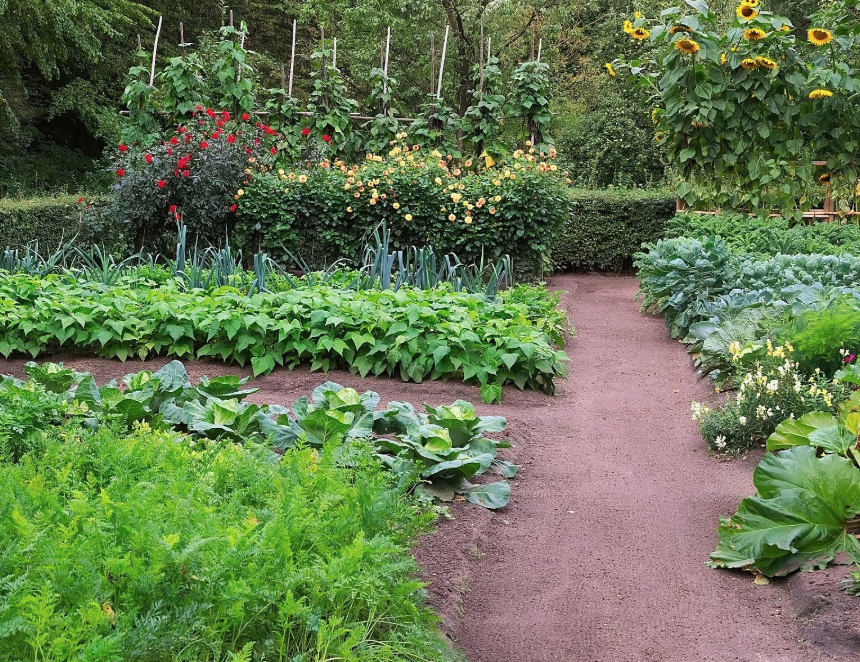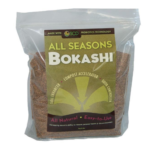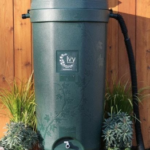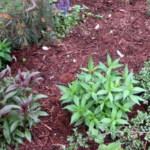-Patrick Metz-

People start gardening for a bunch of different reasons: the joy of creating and growing something; the deliciousness of home-grown vegetables and fruits; knowing where your food comes from and how it has been grown; concern for our environment and the impact of industrial food systems; the sheer delight of a beautiful landscape, and more.
Here at Fifth Season we advocate gardening in harmony with, not in opposition to, natural rhythms and processes. It’s not only good for the earth, it produces great results. This applies to ornamental gardening as well as vegetable gardening. Here are some quick tips and products to help get you on your way to gardening more sustainably. Try some, or try them all.

Compost
Don’t send food scraps, garden debris, and leaves off to the landfill. You can make an informal compost heap, build your own compost bins, or come see us for great smalls space composters. If your compost isn’t cooking well, add some Bokashi or alfalfa meal to kick start it.
Chose Plants Wisely
Grow a wide variety of non-invasive, native, and climate-appropriate plants to reduce water usage, and to provide food and habitat for beneficial insects and birds. These plants are also more resistant to diseases and pests than many exotics.
Rain Barrels

Invest in some rain barrels to collect water from your rooftop. Invaluable in times of drought, and far better for your plants all the time.
Grow More Garden, Less Grass
Replace your lawn with food-producing beds, hardy perennials, native shrubs and rain gardens. In shady areas where grass is a struggle anyway, try a lovely, cool, moss garden.
Reduce the Use of Plastics
Reuse and recycle plastic pots and seed trays; donate garden plastics to city schoolyard garden projects, master gardener programs, or bring them by Fifth Season for us to reuse. Also, when buying plants, look for nurseries that offer plastic alternatives. We are happy to offer coco coir pots, peat pots, and rice hull pots as plastic alternatives.
Invest in hard plastic seed trays and winstrips for seedlings, they can be used for years without breaking.
Recycle plastic plant markers by painting them and using a paint pen to label your seedlings.
Mulch Heavily

Daddy Pete’s pine bark or hardwood mulch will help keep your plants protected from temperature extremes, better-hydrated, and reduce water use during dry months.
Consider Coir (coconut hull)
To preserve our ecologically valuable peat bogs, consider replacing your use of sphagnum peat moss with coir (coconut fiber), this is a bi-product of the coconut industry. Try using 2 parts Black Gold Just Coir mixed with 2 parts Mushroom compost and 1 part perlite or coarse sand instead of peat based planting mixes. Use Coco Loco Potting Mix for up-potting more mature plants.
Watering
Use drip (soaker) hoses to water vegetables. The use of drip hoses reduces water lost through evaporation and reduces the splash up of pathogens on fungally sensitive vegetables like tomatoes and squash.
Avoid Synthetic Fertilizers
Get your soil tested before adding fertilizers that may not be necessary, and when you do fertilize use organic mineral and animal products. These offer a slower release of N,P, and K, which work through your soil to feed your plants and are not so excessive as to leech out and kill your soil’s biology.

Jan says
Just saw your website for the first time. I live in Fearrington
Village where it is no longer possible to have grass in my back yard. I have been collecting various mosses on my walks and attempting to have it spread in between the already existing moss. Is there anything I can do besides water and be patient to encourage its growth? Thanks.
ashley says
Hi Jan, Welcome to our website! Transplanting and keeping the moss moist is the best way to get your moss to grow and spread, and you can also fill in the transplanted pieces with a “moss slurry”. I’m linking to an article from Oregon State University that talks about moss gardening and gives instructions for the slurry. Even though we aren’t in the Pacific Northwest, the info is similar (except fall is usually a dry season for us, and spring is wet). https://bryophytes.science.oregonstate.edu/page32.htm Hope this helps – moss yards are so, so lovely!